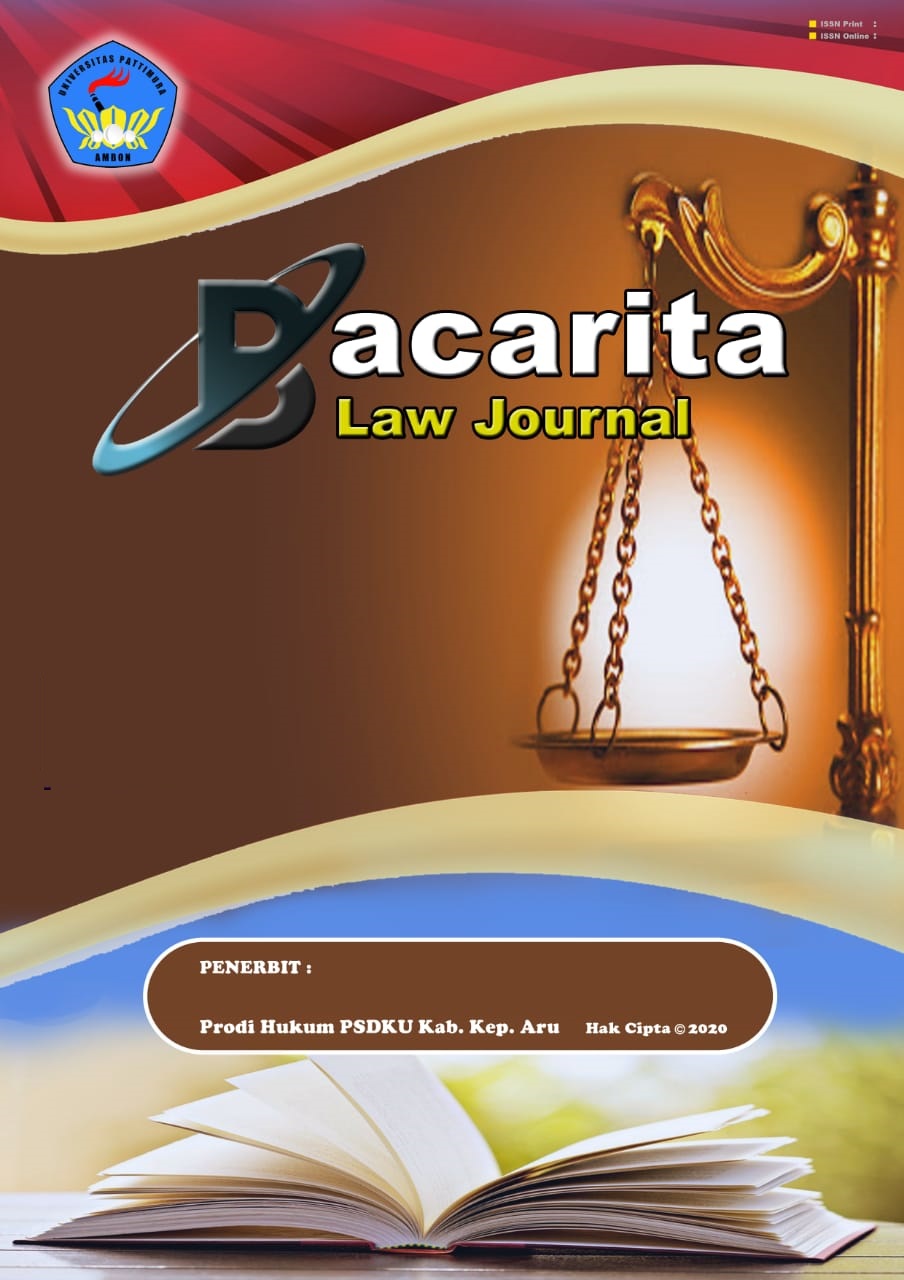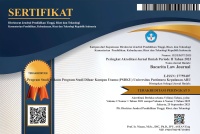Tindak Pidana Penyerobotan Tanah
Abstract
This study aims to find out: what are the material elements of land grabbing that can be punished, and what are the judges'juridical considerations of criminal acts of land grabbing. Normative Juridical Research Research. Legal research is conducted to find solutions to legal issues that arise, primary data and secondary data are analyzed descriptively. This research is directed to be able to study and analyze whether land grabbing can be criminalized or not, analyze and explain the application of criminal law to criminal acts of land grabbing. The results showed that the judge who examined and tried the case with register number 225/Pid.B/2015/PN.Kla stated that the defendant was proven to have committed the act as charged by the first and second charges, but the panel of judges decided to release the defendant from all charges. law because the actions committed by the defendant are not a crime (onslag van recht vervolging). The Judge considered that the indictment submitted by the Public Prosecutor at the trial was in accordance with the actions of the defendant, but based on the results of the trial facts the Panel of Judges who examined and tried the case with register number 225/Pid.B/2015/PN.Kla did not find any action crime from the defendant's actions during the evidentiary process.
Downloads
References
Adrian Sutedi. Hak Atas Tanah dan Pendaftaranya, Sinar Grafika, Jakarta, 2012.
Departemen Pendidikan dan Kebudayaan, Pola Penguasaan, Pemilikan dan Penggunaan Tanah Secara Tradisional, Depdikbut, Ambon, 1999.
Peter Mahmud Marzuki, Penelitian Hukum, Kencana Prenada Media Group, Jakarta, 2014.
Soejono Soekanto, Meninjau Hukum Adat Indonesia, Suatu Pengantar Untuk Mempelajari Hukum Adat, Jakarta, 1981.
Copyright (c) 2023 Muh Efendi Marjan, Elsa Rina Maya Toule, Julianus Edwin Latupeirissa

This work is licensed under a Creative Commons Attribution-NonCommercial 4.0 International License.
Authors who publish their manuscripts in this Journal agree to the following conditions:
- The copyright in each article belongs to the author, as well as the right to patent.
- Authors are able to enter into separate, additional contractual arrangements for the non-exclusive distribution of the journal's published version of the work (e.g., post it to an institutional repository or publish it in a book), with an acknowledgment of its initial publication in this journal.
- Authors are permitted and encouraged to post their work online (e.g., in institutional repositories or on their website) prior to and during the submission process, as it can lead to productive exchanges, as well as earlier and greater citation of published work.
- Authors have the right to self-archiving of the article (Author Self-Archiving Policy)















